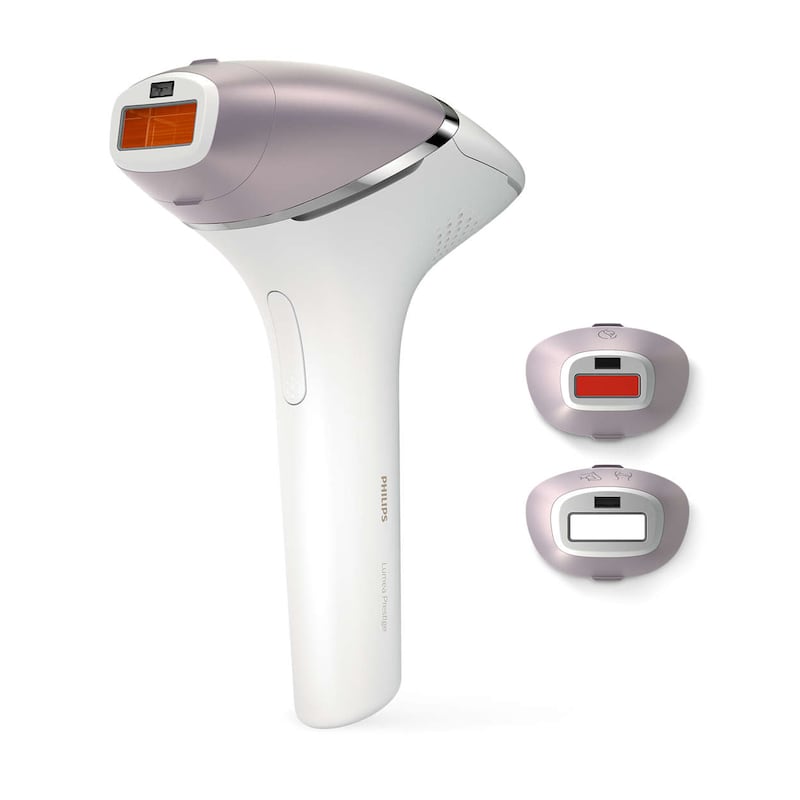I’m loathe to recommend something as expensive as the product below, and I very rarely devote this column to just one thing. However, if a device gives me time where I didn’t have it before, or solves a problem I’ve wrestled with since the age of 12 (as this does), it deserves the space and you deserve to know about it.
So the bad news – the Philips Lumea Prestige (€489.99) is very expensive. Worse still, however, are the findings of a 2017 UK study saying that on average, women who wax spend £23,000 (€25,123) on waxing in their lifetime. If you think shaving is saving, you're apparently still spending £6,500 (and eight weeks of your very finite life).
Compared to that, a one-off spend of just under €500 (if you can afford it, that is) seems sensible, and the good news is that this device (about which I was sceptical) works. It kills hair using Intense Pulsed light (IPL), a narrow set of wavelengths of light which target the melanin – the pigment – in your skin and hair. The Lumea is less powerful than the clinically available versions you’ll find at laser clinics and the like. It takes longer and involves more sessions, but you can do it while you watch TV at home, and it’s far less painful.

Do your research
Though Philips claim the device should be completely comfortable to use, the reality is that it isn’t painless. Since the light is attracted by the melanin in your body hair, the device works by sending a wave of light down the hair shaft. The light converts to heat and bursts out at the hair bulb, killing the cells lining it and preventing the regrowth of the hair. For this reason, not everyone can use the device, so do your research before buying – sensitive skin may not get along well with it, and the device won’t work on the deepest skin tones – the greater the contrast between hair colour and skin colour, the better it will work.
Since hair is always in one of three stages, and not all hairs in the same area will be in the same growth phase, you need to perform three treatments on the one area – say, legs. The hairs will be in either resting phase, growing phase or falling out phase, so each treatment should be two weeks apart to ensure all hairs are treated in the growing phase. One leg takes around eight minutes to treat.
The device isn’t perfect – it will remove up to 92 per cent of hair, so it isn’t giving you completely smooth legs. However, it gave me sufficiently hair-free legs to go bare-legged through the summer (after six weeks of use, and my third treatment) without having to think about shaving. It comes with an accompanying app which will remind you when your treatments are due, and log them for you.
If you’re the type of person who tends to be hit and miss about this stuff, this isn’t a wise investment for you. Follow the instructions to the letter, however, and the amount of time and money you spend on body hair will reduce dramatically. After the initial six weeks, you will need a top up around every two months, and that’s it. The Lumea can be used anywhere on the body safely, and that includes the upper lip and jaw area if that’s a concern.











